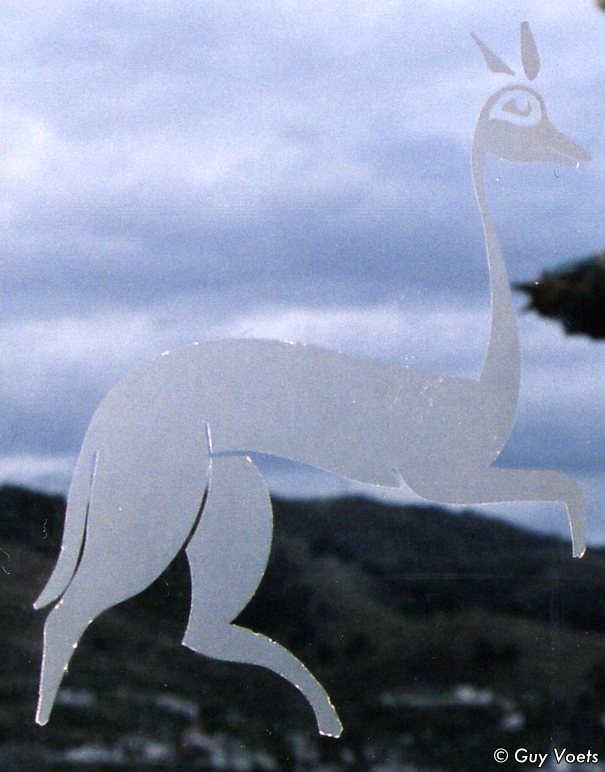
 |
Comares Palace |
||
| Palácio de Comares |
|||
| Paleis van Comares |
|||
| ← | ↑ | → | |
|
Comares is an ensemble of halls around the Patio of the
Arrayanes (myrtles): the hall of the boat (<baraka = blessing), the
hall of the ambassadors, etc. The inscriptions on the palace walls are
quotes from the Qur'an, poems and the motto of the Nasrids: 'Only God
is Victor'. Yusuf wanted to surprise the visitors with the beauty of
this palace, but he probably never saw the palace completed, since his
son Muhammad V is mentioned as the king that had it built. The Patio of the Arrayanes was previously called Patio of the
Pond. The 34 meter long pond is the most important architectural
element of the Comares Palace. The green colour of the myrtles that are
planted around the pond contrasts with the white marble of the walls
and floor. The Hall of the Boat gets its name probably from a haphazard
transformation of the Arab word 'baraka', blessing. The walls are
decorated with plasterwork with the motto and armour of the Nasrids,
with the word 'baraka'. The Hall of the Ambassadors is the most majestic of the palace. It is entirely decorated with calligraphic inscriptions. The ceiling is a combination of geometric and natural forms. According to Fernandez-Puertas, the ceiling represents the Seven Skies of the Islam Paradise with God sitting on his throne in the eighth sky. The artisanship is so special that the cedarwood looks as if it were mother of pearl, silver and ivory. The restrained light and decorations give the hall a pleasant atmosphere of freshness and beauty. Above the Hall of the Ambassadors rises the Tower of Comares, with its 45 meters the highest of the Alhambra. A number of siderooms of the patio, that were women's
quarters, were destroyed in order to make place for the Palace of
Charles V. Some sources even pretend that an entire Winter palace was
abolished, but there are insufficient proofs for this. |
Comares é um conjunto de salas que circulam o
Páteo dos
Arrayanes (mirtas), como a sala da barca (<baraka,
benção), a sala dos
embaixadores, etc.. As inscrições neste palácio
são citações do Corão, poemas
e o emblema dos Nazarides: "somente Deus é vitorioso'. Yusef
quis
surpreender seus visitantes pela beleza do local, mas é
provável
que nunca tenha visto o palácio terminado, pois é seu
filho Mohammed V
que consta como o rei que o construiu. O Páteo das Mirtas se chamava Páteo do Lago. O
tanque de 34m
de comprimento que aí se encontra permanece como o elemento mais
significativo da arquitetura do Palácio de Comares. A cor verde
das
mirtas que foram plantadas em volta do tanque contrasta com o
mármore
branco dos muros e do chão. A Sala da Barca provavelmente tem este nome a partir de uma
transformação acidental da palavra árabe 'baraka',
que significa 'benção'. As
paredes são decoradas com gesso e o brazão e o emblema
dos Nazarides,
bem como com a palavra 'baraka'. A Sala dos Embaixadores é a mais majestosa de todo o
palácio.
Toda decorada com inscrições que a embelezam. O teto
é uma combinação
de formas geométricas e naturais. Segundo Fernandez-Puertas, o
teto
representa os Sete Céus do paraíso islâmico, com
Deus no oitavo céu. O artesanato é tão especial
que dá a impressão de que
no é de madeira de cedro, mas madrepérola, prata e
marfim. A luz suave e
a decoração criam uma atmosfera de frescura e de beleza. Acima desta sala domina a Torre de Comares, que com seus
45m, é a mais alta da Alhambra. Alguns aposentos laterais ao pateo, onde as mulheres viviam,
foram destruídas, para dar lugar ao Palácio de Carlos V.
Comenta-se que
todo o Palácio de Inverno foi sacrificado por este motivo, mas
não
existem provas deste fato. |
Comares is een geheel van zalen die rond de Patio van de
Arrayanes (myrten) liggen: de zaal van de barca (<baraka, zegening),
de zaal van de ambassadeurs enz. De inscripties in dit Paleis zijn
citaten
uit de Koran, gedichten en het devies van de Nazariden: 'Alleen God is
overwinnaar'. Yusuf wilde dat de bezoekers verrast zouden zijn door de
schoonheid, maar heeft het paleis waarschijnlijk niet afgewerkt gezien,
want zijn zoon Mohammed V staat vermeld als de koning die het gebouwd
heeft. De Patio van de Arrayanes heette vroeger onder meer de Patio
van de Vijver. Die 34 meter lange vijver blijft het belangrijkste
element van de architectuur van het Paleis van Comares. De groene kleur
van de myrten die rond de vijver geplant zijn, contrasteert met het
witte marmer van de muren en de vloer. De Zaal van de Barca krijgt haar naam vermoedelijk van een
toevallige vervorming van het Arabisch woord 'baraka' dat
zegening betekent. De muren zijn versierd met pleisterwerk met het
blazoen en het devies van de Nazariden en het woord 'baraka'. De Zaal van de Ambassadeurs is de meest majestueuze van het
paleis. Ze is geheel versierd met decoratieve inscripties. Het plafond
is een combinatie van geometrische en natuurlijke vormen. Volgens
Fernandez-Puertas verbeeldt het plafond de Zeven Hemelen van het
Islamparadijs met God die in de achtste hemel troont. Het vakmanschap
is zo speciaal dat het lijkt of het cederhout parelmoer, zilver en
ivoor is. Het getemperde licht en de versieringen geven de zaal een
aangename sfeer van frisheid en schoonheid. Boven de zaal van de ambassadeurs verrijst de Toren van
Comares, met zijn 45 meter de hoogste van het Alhambra. Een aantal zijkamers van de patio, die vrouwenverblijven
waren, werden afgebroken om plaats te maken voor het Paleis van Karel
V.
Men zegt zelfs dat een compleet Winterpaleis hiervoor vernietigd werd,
maar hiervoor zijn onvoldoende bewijzen. |